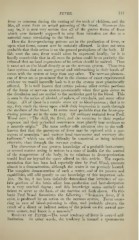Page 707 - My FlipBook
P. 707
FEVER. Ill
fever so common during the cutting of the teeth of children, and the
like, all come from an actual poisoning of the blood. However this
may be, it is now very certain that all of the graver forms of fever
which were formerly supposed to arise from irritation are due to a
material cause circulating in the blood.
How the fever-producing poisons act in the production of fever, or
upon what tissue, cannot now be certainly affirmed. It does not seem
probalile that their action is on the general protoplasm of the body. If
this were the case, fever would often be expressed locally, for it is
hardly conceivable that in all cases the poison could be so perfectly dis-
tributed that no local expressions of its action should be noticed. Then
it must act on the blood directly or on the nervous system. These two
form systems that are more general and widereaching in their bonds of
union with the system at large than any other. The nervous phenom-
ena of fever are so prominent that in the absence of exact experimental
evidence we would naturally look to it as the system most prominently
affected. It is well known that certain poisons affect certain portions
of the brain or nervous system prominently when they gain access to
the circulation and are carried to the particular part by the blood. This
is seen in the action of alcohol, of opium, of strychnia, and many other
drugs. All of these in a certain sense act as blood-poisons ; that is to
say, they reach the tissue upon which their impression is made through
the medium of the blood. It seems most probable that the fever-pro-
ducing poisons act in the same way. Of ordinary malarial fever Prof.
Wood says : " The chill, the fever, and the sweating in their regular
sequence and their periodical occurrences most plainly bear evidence to
a neurotic origin." The same author calls attention also to the well-
known fact that the paroxysm of fever may be replaced with a par-
oxysm of neuralgia " and various local vaso-motor and secretory dis-
turbances " which can with difficulty be conceived as being induced
otherwise than through the nervous system.
The discussion of our present knowledge of a probable heat-centre,
or several centres acting in unison in a state of health for the control
of the temperature of the body, in its relations to fever-production
would lead me beyond the space alloted to this article. The experi-
mentation that has been had, especially that by Prof. Wood, amounts
almost to a demonstration, although the centre is not precisely located.
The complete demonstration of such a centre, and of its powers and
capabilities, will add greatly to our knowledge of this important sub-
ject. So far, it has been definitely determined that irritation of cer-
tain portions of the brain affect heat-production and heat-dissipation
in a very marked degree ; and this knowledge seems entirely suf-
ficient to serve as the basis of the doctrine set forth above. On this
basis Prof. Wood formulates the following : " Irritative fever, if it
exist, is produced by an action on the nervous system. Fever occur-
ring in case of blood-poisoning is often, and probably always, the
result of a direct or indirect action of the poison on the central ner-
vous system, and hence is a neurosis."
Results of Fever.—The usual tendency of fever is toward self-
limitation. In other words, the tendency is toward a spontaneous


